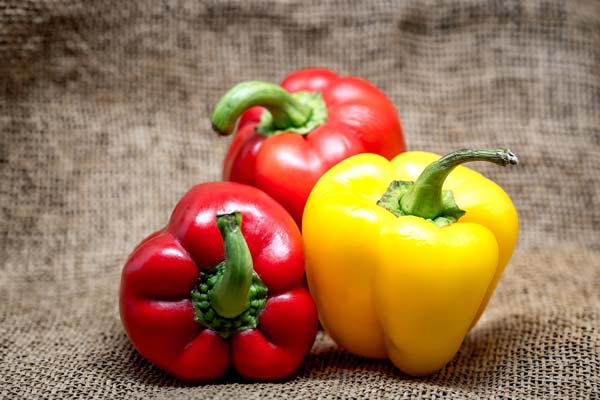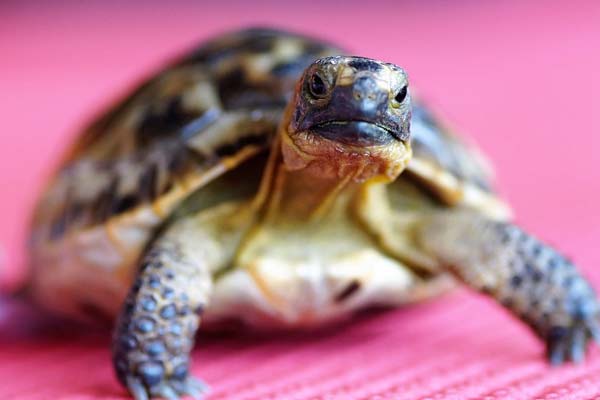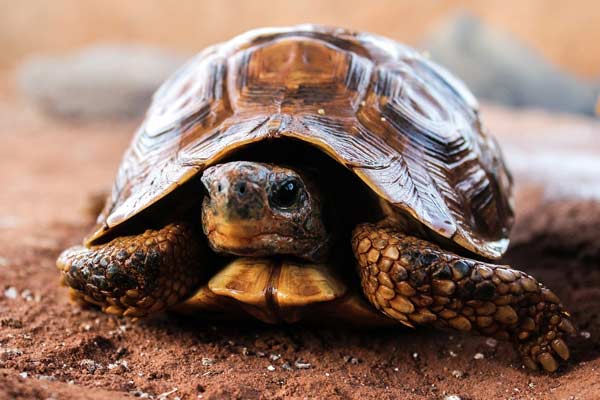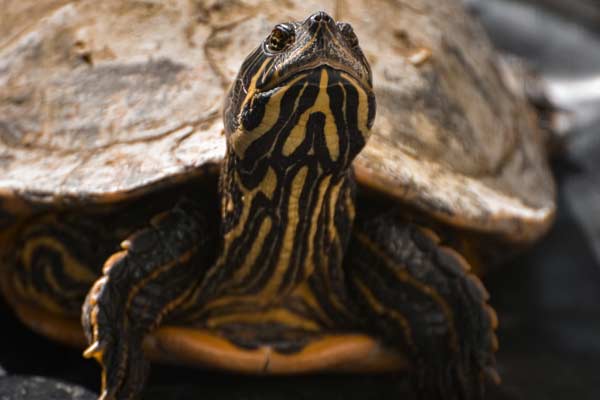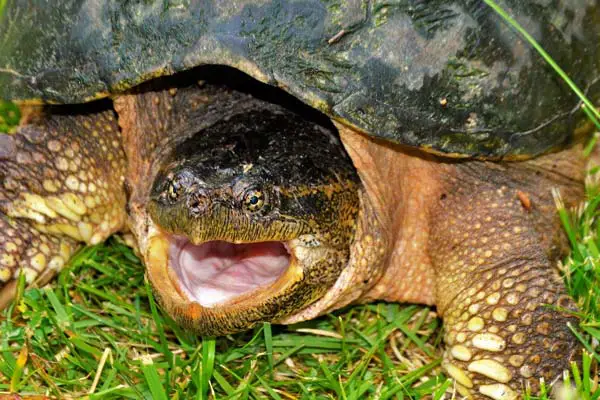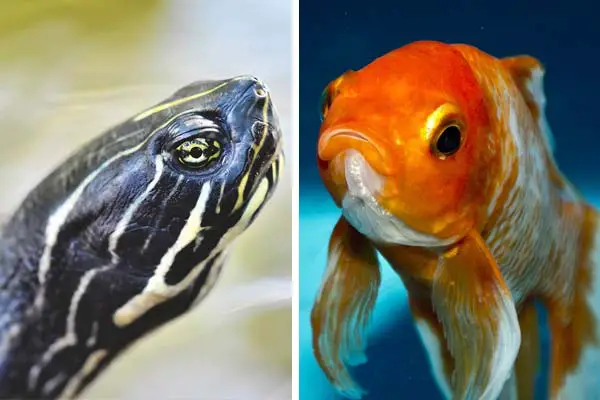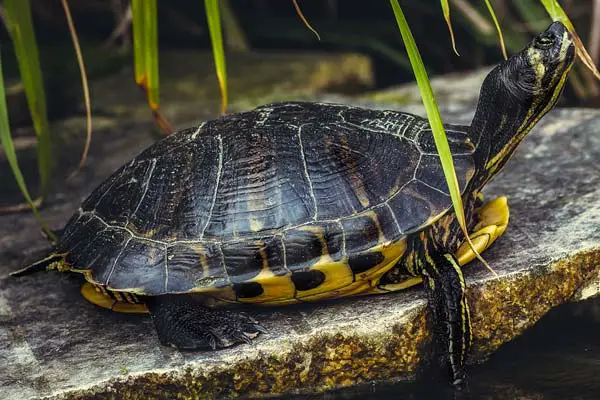Can Turtles Eat Bell Peppers? The Perfect Match or a Recipe for Disaster?
Turtles are fascinating creatures that make great pets. However, as with any pet, a balanced diet is essential to keep them healthy and thriving. One common question that many turtle owners ask is, “Can turtles eat bell peppers?”
The answer is yes; turtles can eat bell peppers. Bell peppers are a beneficial source of vitamins and nutrients, including Vitamin C and Vitamin A, which are important for a turtle’s health. However, moderation is key when feeding them to turtles, as excessive consumption can be harmful. A varied diet is necessary to ensure proper nutrient intake.
It’s important to note that while bell peppers are safe for turtles, not all vegetables are suitable for them. Beware of spinach and broccoli! These veggies contain high levels of oxalates, which can harm turtles. It is crucial to conduct research and provide a balanced diet that meets their specific dietary requirements.
Can Turtles Eat Bell Peppers?
Absolutely! Bell peppers are readily available and can be a beneficial addition to a turtle’s diet. They are safe for turtles to consume and can provide valuable nutrients. As a turtle owner, you can feel confident about including bell peppers in their diet as a healthy and enjoyable option.
Overview of the Topic and Its Relevance
Turtles need a balanced diet of vegetables, fruits, and proteins to maintain health. Bell peppers provide essential vitamins and minerals while low in fat, making them a beneficial choice for turtles.
Discussion on the Safety of Feeding Bell Peppers to Turtles
Bell peppers are safe for turtles to eat and can be a great addition to their diet. They are rich in vitamins C, A and antioxidants, which can help boost your pet turtle’s immune system and overall health. Bell peppers also add much-needed color and variety to a turtle’s diet.
To safely feed bell peppers to your pet turtle, slice them into small pieces and remove any seeds or stems. This prevents choking and aids in digestion.
To conclude, any bell pepper is safe for turtles to eat. Bell peppers pack a lot of nutrition, making them very healthy for turtles. With that said, make sure to feed your pet turtle a variety of food, not just bell peppers. You should always maintain a proper diet for your turtle.
Nutritional Value of Bell Peppers for Turtles
Bell peppers are a popular vegetable among humans and a healthy addition to a turtle’s diet. Here is an overview of the nutritional composition of bell peppers and how they benefit turtles.
Introduction to Bell Peppers and Their Nutritional Composition
Bell peppers are vegetables in different colors, such as red, green, yellow, and orange. They are low in calories and high in fiber, making them an excellent option for turtles that need to maintain a healthy weight.
Bell peppers contain vital vitamins and minerals for a turtle’s growth and development. The following table shows the nutritional composition of one cup (149 grams) of chopped red bell pepper:
| Nutrient | Amount |
|---|---|
| Calories | 46 |
| Carbohydrates | 9 grams |
| Fiber | 3 grams |
| Protein | 1 gram |
| Fat | 0 grams |
| Vitamin A | 157% of the Daily Value (DV) |
| Vitamin C | 317% of the DV |
| Vitamin B6 | 11% of the DV |
| Folate | 10% of the DV |
| Potassium | 8% of the DV |
| Magnesium | 6% of the DV |
Comparison of Nutritional Benefits for Turtles and Humans
Bell peppers provide numerous nutritional benefits to both turtles and humans. They are particularly rich in vitamin C, crucial for supporting a turtle’s immune system and aiding in iron absorption for red blood cell production.
Moreover, bell peppers are rich in vitamin A, critical for a turtle’s vision, growth, and development. Vitamin A also helps turtles maintain healthy skin and mucous membranes.
In addition to vitamins, bell peppers contain minerals such as potassium and magnesium, which help turtles regulate their blood pressure and maintain healthy bones.
Types of Bell Peppers for Turtles
When feeding bell peppers to turtles, choosing the right type of pepper is essential. Here are some of the most common types of bell peppers and whether or not they are safe for turtles to eat:
Green Bell Peppers
Green bell peppers are safe for turtles to eat and are a great source of vitamin C. However, they should be fed in moderation as they contain more cellulose, which can be difficult for turtles to digest.
Red Bell Peppers
Red bell peppers are also safe for turtles to eat and are a good source of vitamin A. They are also easier for turtles to digest than green bell peppers, making them a great addition to a turtle’s diet.
Yellow Bell Peppers
Yellow bell peppers are safe for turtles to consume and offer good vitamin C. They are easier to digest than green bell peppers but can be slightly more challenging than red bell peppers.
It’s important to remember that bell peppers are a healthy addition to a turtle’s diet and should be fed in moderation. Too much of any one type of food can cause digestive issues and other health problems. It’s also essential to ensure that the peppers are cut into small enough pieces for the turtle to eat without choking.
Considerations for Specific Turtle Species
When it comes to feeding turtles, it’s essential to consider the specific species. Different turtles have different nutritional needs, and some may not be able to digest certain types of food as well as others. Below are some considerations for specific turtle species when feeding them bell peppers.
Red-Eared Slider Turtles
Red-Eared Slider Turtles, being omnivores, can safely include bell peppers in their balanced diet, consisting of plants and animals.
However, it’s important to note that young turtles may be unable to digest bell peppers and older turtles. Additionally, feeding too many bell peppers to a Red-Eared Slider Turtle can lead to diarrhea.
Yellow-Belly Turtles
Yellow-Belly Turtles are another common pet turtle species. Like Red-Eared Slider Turtles, they are omnivores and can safely eat bell peppers. However, cutting the peppers into small pieces is crucial to make them easier for the turtle to eat and digest.
Other Turtle Species
Other turtle species, such as Leopard and Russian Tortoises, have different nutritional needs than Red-Eared Slider Turtles and Yellow-Belly Turtles. While they can still eat bell peppers, they should not make up a large portion of their diet.
These species need a high-fiber, low-protein diet. Therefore, it’s crucial to provide them with a variety of vegetables and plant-based foods and include bell peppers in their diet.
Age and Size
The age and size of a turtle can also affect its ability to digest bell peppers. Young turtles may be unable to digest them, and older and smaller turtles may have more difficulty eating larger pieces of peppers.
It’s essential to cut the peppers into small, bite-sized pieces to make them easier for turtles of all sizes to eat and digest.
Risks and Frequency of Feeding Bell Peppers to Turtles
While bell peppers are generally safe for turtles to eat, some potential risks are still associated with feeding them to your pet. Understanding these risks and feeding bell peppers to your turtle in moderation is essential.
Potential Risks Associated with Bell Peppers
Feeding bell peppers to turtles can pose digestive risks. Turtles have sensitive digestive systems and may experience stomach aches or even choking if they overeat or if the peppers are not cut into small enough pieces. Additionally, some turtles may be allergic to bell peppers, which could cause health problems.
Recommended Frequency of Feeding Bell Peppers to Turtles
To avoid these potential risks, feeding bell peppers to turtles in moderation is recommended. A good rule of thumb is offering them a treat once or twice a week rather than as a regular part of their diet.
When feeding bell peppers to your turtle, cut them into small pieces and remove seeds or stems to avoid digestive issues.
Alternatives to Bell Peppers for Turtles
Turtles can eat various vegetables and fruits, and bell peppers are just one. Many safe and nutritious options exist if you’re looking for alternatives to bell peppers for your turtle’s diet.
Safe Vegetables Suitable for Turtles
Some safe vegetables that turtles can eat include broccoli, kale, chard, clover, green beans, kohlrabi, parsley, watercress, savory, cilantro, collard greens, tomatoes, mustard greens, turnip greens, cabbage, carrots, and sweet potatoes. These vegetables are rich in nutrients and fiber, and they can help keep your turtle healthy and happy.
Nutritional Comparison with Bell Peppers
While bell peppers are a good source of vitamin C and other nutrients, they are not the only vegetables turtles can eat. Some vegetables like kale, chard, and collard greens are even more nutritious than bell peppers. For example, kale is high in vitamin A, calcium, and iron, while collard greens are rich in vitamin K and folate.
Fruits
In addition to vegetables, turtles can also eat fruits like strawberries, blueberries, raspberries, melons, and bananas. These fruits are naturally sweet and provide a good source of vitamins and minerals.
Beans
Beans, kidney beans, and chickpeas are safe and nutritious for turtles. They provide high protein, fiber, and essential nutrients.
Insects and Worms
Turtles are also known to eat insects and worms in the wild. If you want to treat your turtle, you can offer them crickets, mealworms, or earthworms. Ensure you purchase beans from a reliable source and avoid feeding turtles insects exposed to pesticides or harmful chemicals.
Plants
Turtles are herbivores, which means they eat plants. You can offer your turtle a variety of plants to eat, such as dandelion greens, clover, and alfalfa hay. These plants are safe and nutritious and help keep your turtle healthy and happy.
Hot Peppers
While some turtles may enjoy eating hot peppers, feeding them to your turtle is not recommended. Hot peppers can cause digestive problems and may even be toxic to turtles in large quantities.
Preparing Bell Peppers for Turtles
Proper preparation of bell peppers is crucial to ensure their safety and nutritional value when feeding them to turtles. Here are a few tips on how to prepare bell peppers for your turtle:
Cutting Bell Peppers for Turtles
Turtles have small mouths, so cutting bell peppers into small pieces is crucial to make them easier to eat. Depending on your turtle’s preference, you can cut them into thin slices or small cubes.
Removing the seeds and stem is also essential, as they can be difficult for turtles to digest.
Washing Bell Peppers for Turtles
Before feeding bell peppers to your turtle, it is crucial to wash them thoroughly to remove any dirt or pesticides that may be present. You can rinse them under running water or soak them in a water bowl for a few minutes.
Hydrating Bell Peppers for Turtles
Bell peppers are a great source of hydration for turtles, as they contain a high percentage of water. To further increase their hydration, you can mist them with water before feeding them to your turtle.
Serving Bell Peppers to Turtles
Bell peppers can be served alone as a snack or mixed with other nutritious foods to create a balanced diet for your turtle. It is important to remember to limit the amount of bell peppers you give your turtle, as too much can cause digestive problems.
Monitoring and Adjusting Turtle’s Diet
When introducing a new food item to a turtle’s diet, closely monitoring its response is essential. Bell peppers are generally safe for turtles, but some may react adversely. Introducing bell peppers gradually and in small amounts is recommended to avoid digestive issues.
Observing Turtle’s Response to Bell Peppers
Turtle owners should observe their pet’s response to bell peppers closely. Signs of an adverse reaction may include lethargy, diarrhea, or vomiting. If these symptoms occur, removing bell peppers from the turtle’s diet may be necessary.
Monitoring Overall Health and Behavior
In addition to observing the turtle’s response to bell peppers, monitoring their overall health and behavior is essential. A healthy turtle should have bright eyes, clear nostrils, and a healthy appetite. Adjust the turtle’s diet accordingly if it shows signs of illness or changes in behavior.
Adjusting the Diet Based on the Turtle’s Needs
Turtles have different dietary needs based on their species, age, and overall health. It is essential to adjust their diet accordingly to meet their specific needs.
Bell peppers can be nutritious to a turtle’s diet but should not be the sole food item. A well-rounded diet should include a variety of vegetables, fruits, and protein sources.
Conclusion
Turtles can safely consume bell peppers as part of a balanced and varied diet, as they provide essential vitamins and minerals. However, bell peppers should not be the sole food source for turtles, and a diverse range of nutrients should be included.
To prepare bell peppers for turtles, ensure they are washed and cut into small, digestible pieces, removing seeds and stems. Feeding bell peppers in moderation is vital to prevent digestive issues.

